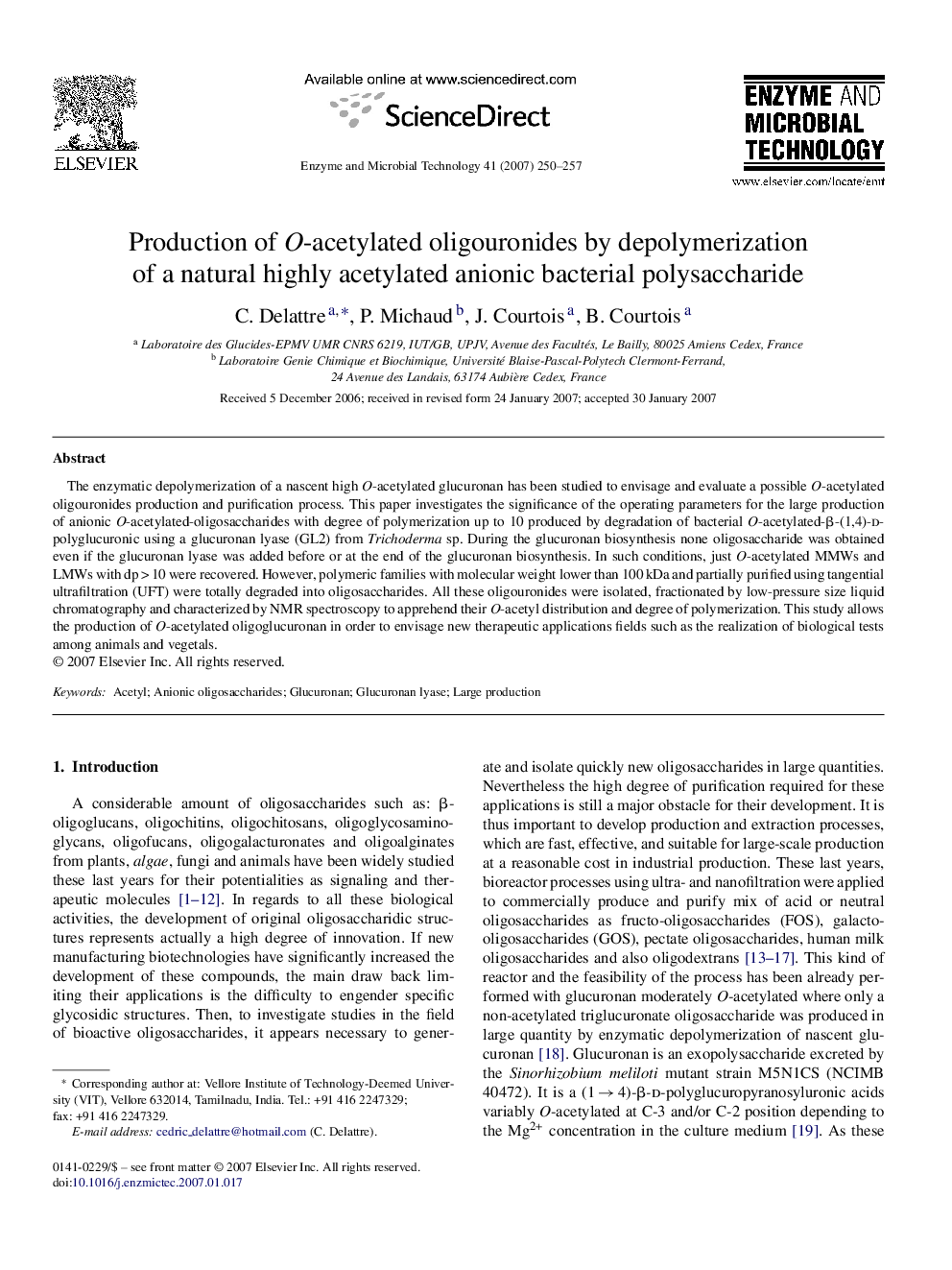| Article ID | Journal | Published Year | Pages | File Type |
|---|---|---|---|---|
| 18717 | Enzyme and Microbial Technology | 2007 | 8 Pages |
The enzymatic depolymerization of a nascent high O-acetylated glucuronan has been studied to envisage and evaluate a possible O-acetylated oligouronides production and purification process. This paper investigates the significance of the operating parameters for the large production of anionic O-acetylated-oligosaccharides with degree of polymerization up to 10 produced by degradation of bacterial O-acetylated-β-(1,4)-d-polyglucuronic using a glucuronan lyase (GL2) from Trichoderma sp. During the glucuronan biosynthesis none oligosaccharide was obtained even if the glucuronan lyase was added before or at the end of the glucuronan biosynthesis. In such conditions, just O-acetylated MMWs and LMWs with dp > 10 were recovered. However, polymeric families with molecular weight lower than 100 kDa and partially purified using tangential ultrafiltration (UFT) were totally degraded into oligosaccharides. All these oligouronides were isolated, fractionated by low-pressure size liquid chromatography and characterized by NMR spectroscopy to apprehend their O-acetyl distribution and degree of polymerization. This study allows the production of O-acetylated oligoglucuronan in order to envisage new therapeutic applications fields such as the realization of biological tests among animals and vegetals.
